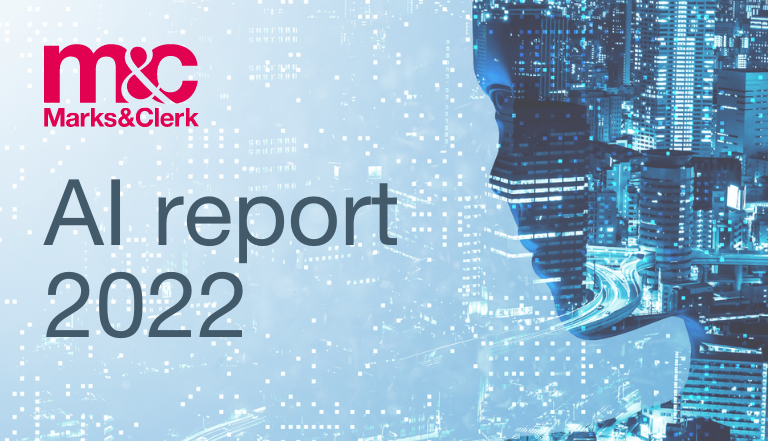Artificial Intelligence enters new phase of growth, as South Korea emerges as a key innovation frontrunner, new analysis from leading intellectual property firm, Marks & Clerk finds
- New analysis shows that whilst AI patent filings are still actively growing, the rate of this growth is slowing, a sign the market may now be maturing
- Number of EPO oppositions filed against patents rises again in 2021
- Computer vision technology sees growth in patent filings for fifth consecutive year
- Republic of Korea has the highest rate of AI applicants per capita
The artificial intelligence (AI) market is entering a new phase of growth as the recent gold rush starts to show signs of slowing, according to new analysis from Marks & Clerk, the leading global intellectual property firm. Whilst the number of AI filings per year at the European Patent Office (EPO) continues to rise at a convincing rate, with a 24% rate of growth in 2019, the pace of growth has slowed, suggesting that the AI industry is beginning to mature.
However, the continued growth along with a wave of exciting developments mean that the market is far from another AI winter. Further supporting this is the fact that new countries are emerging as frontrunners when it comes to patent applications, with the Republic of Korea coming out top per capita. Our detailed analysis has also shown that patents have become an increasingly key part in defending business strategy, with the number of EPO oppositions filed against patents relating to AI technologies increasing in 2020 (25) and then again in 2021 (27). In fact, there has been a decrease in the overall opposition rate across all technology areas, suggesting that AI patents in particular are increasingly becoming integral to businesses’ commercial strategies.
Looking more closely at the number of applicants on a country-by-country basis, Chinese applicants at the EPO overtook Japanese applicants in 2020, making it the third largest filer of AI applications, behind the United States and Europe. However, as mentioned, between 2015 and 2020, per capita, applicants from the Republic of Korea have overtaken that of Japan, the United States and Europe to become the largest filers on a per capita basis. When looking at individual sectors, the “manufacturing and industry” sector has risen by three places into the top 10 sectors by number of patent filings, which is indicative of AI being applied more in the physical economy.
At a technology level, computer vision technology has seen an accelerated increase in patent applications in the last five years, up from 1,590 to 1,939 publications in 2021. Conversely, speech processing applications have been in decline, falling from 45% of all publications in 2000 to only 7% of publications in 2021. As such, it appears that after a period of heavy investment, speech processing as a technology has reached a maturity commensurate with the current market opportunities, while the heavy increase in computer vision likely indicates a still significant runway of potential applications.
Mike Williams, Partner, at Marks & Clerk, comments:
“Over the last ten years, AI has become a household term, and we have seen it shift from an emerging technology to mainstream adoption. With that in mind, it’s not surprising that we have seen a slow-down – of what was rapid growth – in the volume of patent filings. However, that doesn’t necessarily correlate to a slump in innovation or a fall in investment, more a sign that the industry is meeting a point of maturity.”
“The rising number of oppositions filed against AI technologies underlines the value of patent applications in a highly competitive industry. All too often businesses overlook the importance of getting protections in place when starting out, however ensuring you have the rights to your IP not only adds commercial value to your business, but it also safeguards you from imitation.”
Williams continues:
“The fact that China has climbed up the ranks is proof that its focus on home-grown technologies is having the desired effect, and that Chinese companies are looking to protect their innovations abroad – perhaps a sign they will begin to operate on a more global scale in future.
“Whilst it appears the recent AI patent application ‘gold rush’ is starting to slow, there remains strong growth within the sector, displayed by the rise in computer vision applications and in industry and manufacture. As the market matures, we expect to see more nuanced, complex technology coming through applications, and the EPO needs to understand these nuances to ensure the correct protections are granted.
“At Marks & Clerk, we have a strong track record of success because of our deep understanding of both the technological and legal dimensions. As a result, in 2021 we had a 75% allowance rate for all applications closed, which is 20% greater than the industry average (55%).”
Please view and download the report here or via the AI page on the Marks & Clerk website.
About Marks & Clerk
Marks & Clerk is the largest firm of intellectual property advisers in the UK and is recognised as one of the world’s leading IP firms. Its patent and trade mark attorneys offer a full range of intellectual property services – covering patents, trade marks, designs and copyright – for clients ranging from SMEs and spinouts to universities and multinationals.
The firm’s patent attorneys all have scientific or engineering backgrounds whilst its trade mark attorneys advise on all areas of brand protection. Services include: obtaining patent and trade mark protection worldwide; portfolio management; IP strategy and commercialisation; licensing; enforcement; and due diligence. With a network of 18 offices across the UK (nine locations), continental Europe, North America and Asia, and long-established relationships with other leading IP firms worldwide, the firm is able to assist innovators to protect and maximise the value of their intellectual assets on a local and global basis.
